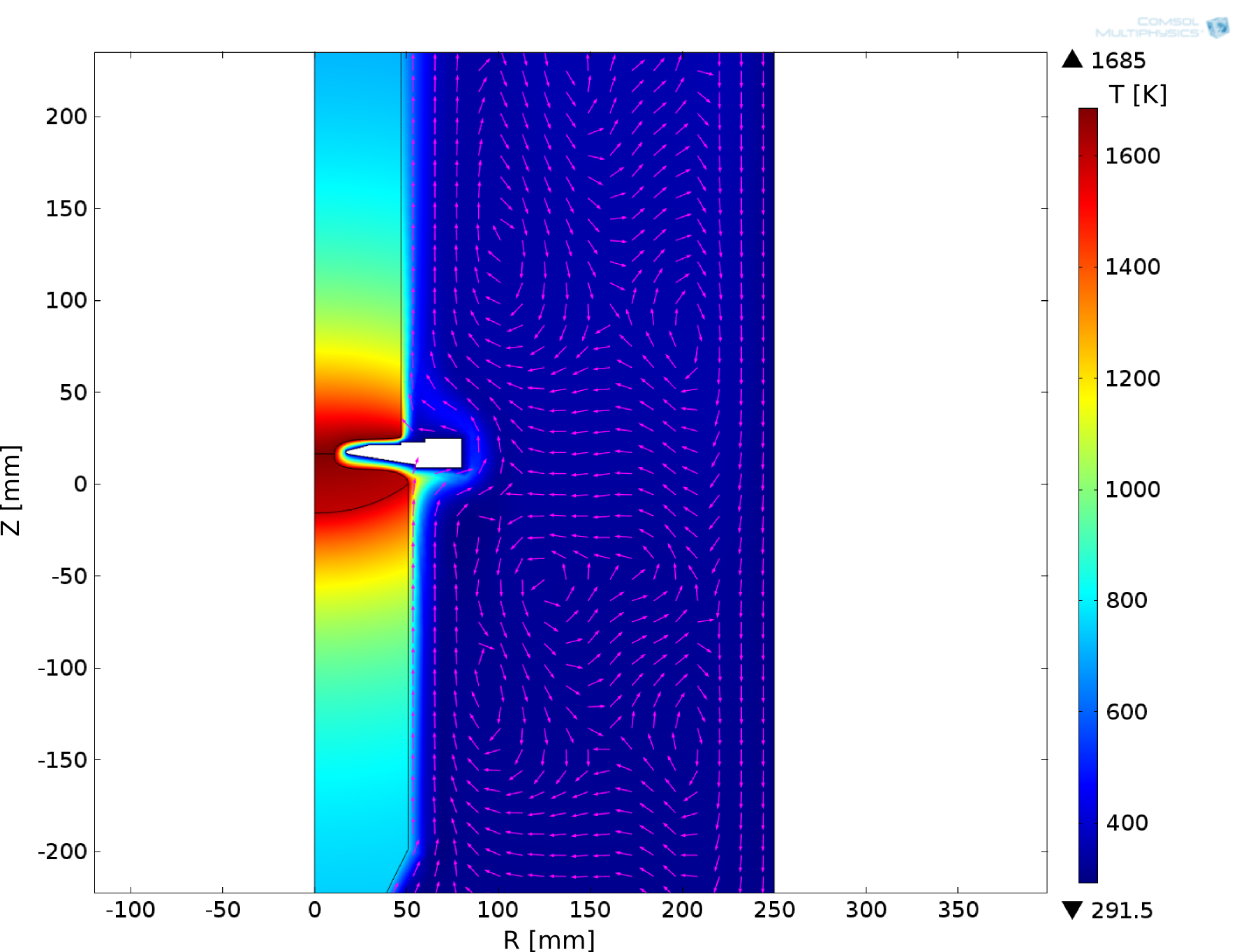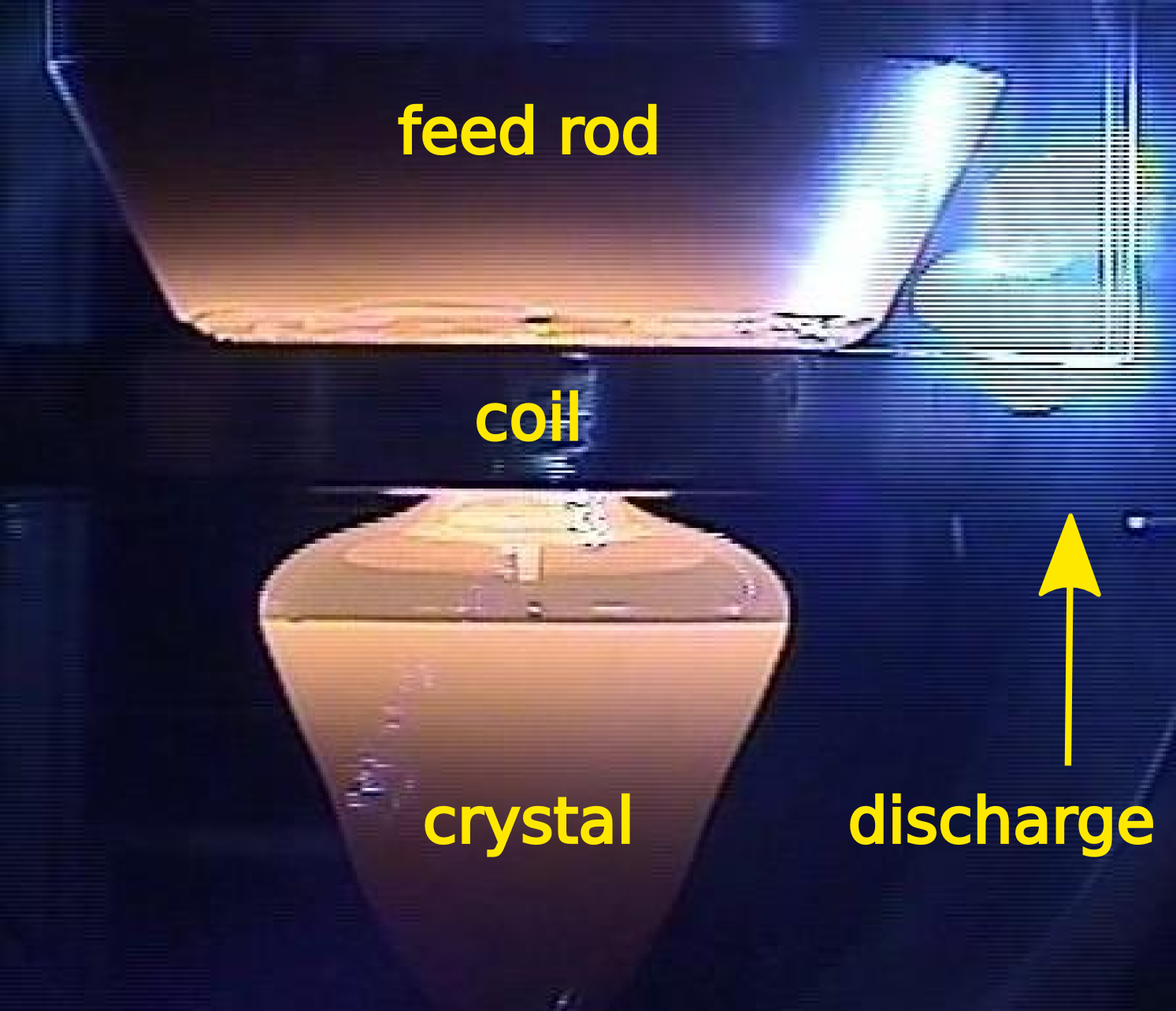| Search for content and authors |
Guided gas flow as an effective mean to overcome crystal diameter limitations in FZ growth of large silicon crystals |
| Michael Wünscher , Helge Riemann , Hans-Joachim Rost , Robert Menzel , Sandra Haufe |
|
Leibniz Institute for Crystal Growth (IKZ), Max-Born-Str 2, Berlin 12489, Germany |
| Abstract |
Despite the persisting demand for larger crystals, the maximum diameter of Floating Zone (FZ) silicon crystals could not increase since 2000, when a 200 mm crystal was firstly presented. We see several reasons for the stagnation in diameter evolution and focused on the contribution of the gas atmosphere. In contrast to vacuum, the surrounding gas reduces the evaporation of silicon from the melt and is essential to grow large and long single crystals. One weakness of the commonly used argon gas is its low dielectric strength. Due to the use of inductive heating with a single turn coil, a high voltage is applied to a small gap, the main slit (thickness ~1.5mm), resulting in a high electric field. With increasing diameter more electric power and, hence, higher voltage is needed. As a consequence ionization of the gas takes place and breaks the FZ process with an arc discharge. This breakdown voltage can be increased by adding nitrogen to the atmosphere what is commonly used to grow crystals with a diameter larger than 100 mm. Another option is the increase of the gas pressure. Both, the nitrogen concentration and the gas pressure are limited during the growth of single crystals by a higher risk for generation of dislocations or crystal cracking.  Figure 1 Numerical result of the temperature field in the crystal, melt, feed rod and gas chamber (Argon with increased viscosity) with normalized vectors of the velocity field The breakdown voltage is inversely proportional to the gas temperature. To clarify our picture of the gas flow, we measured temperatures during growth and compared these results with our numerical calculations. The numerical investigations of the gas flow in a typical FZ machine revealed a very high gas temperature being close to melting point temperature of silicon between the melt surface and the induction coil (see fig. 1). This gave us the motivation to investigate the temperature dependency in a separate experiment, where we measured the breakdown voltage of various gases and electrode materials over the interesting temperature range. To reduce the risk of arcing we modified our standard FZ set-up to significantly lower the temperature of the gas close to the main slit. With our standard set-up we grew several crystals and investigated the risk of arcing in the cone phase. The feed rod diameter was 100 mm. We applied an over pressure of 0.2 bar to the pure argon atmosphere without adding nitrogen. We reproducibly generated arc discharges at the main slit at cone diameters between 60 mm to 80 mm (see fig. 2). These results agree with those found in previous experiments. Under equal conditions our modification allowed to increase the diameter of the crystal up to 125 mm, before arcing happened. This modification in combination with the previously used methods can be a further step to significantly increase the crystal diameter beyond 200 mm. 
Figure 2 Arc discharge at the main slit of the induction coil during the cone phase of a growing silicon crystal (frame from our video camera) |
| Legal notice |
|
Presentation: Oral at 17th International Conference on Crystal Growth and Epitaxy - ICCGE-17, Topical Session 5, by Michael WünscherSee On-line Journal of 17th International Conference on Crystal Growth and Epitaxy - ICCGE-17 Submitted: 2013-04-15 21:29 Revised: 2013-04-15 22:23 |